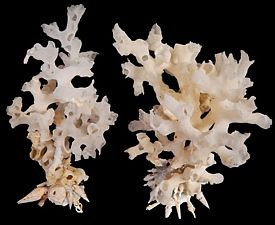A 6 to 8" Carrier Shell accompanied by a coral specimen
A Carrier Shell accompanied by a coral specimen, measuring between 6 and 8 inches in size.
Orders usually process within 2 to 5 business days.
Make Your Selections and Shipping Preference. We Will Email You the amount of the Shipping Cost. When you receive the shipping cost go back into Shells-of-Aquarius.company and click into Purchase Shipping Label. There you will find UPS or USPS. Click into the option you decided on and make your payment. Your order will ship when shipping payment is received.
Email: ja1@mindspring.com
Xenophoridae common name carrier shells.
Xenophoridae is a family of medium-sized to large sea snails, marine gastropod mollusks in the clade Littorinimorpha.
According to the taxonomy of the Gastropoda by Bouchet & Rocroi (2005) the family Xenophoridae has no subfamilies.
The Xenophorids live on sand and mud bottoms of the continental shelves and the continental slopes of the subtropical and tropical seas, ranging from very shallow water to depths of nearly 4600 feet.
(REF: Kreipl, K. & Alf, A. (1999): Recent Xenophoridae)
Many Xenophorids cements small stones or shells to the edge of its shell as it grows, thus the shells of those species are sometimes referred to as "a shell-collecting shells". The genus name Xenophora comes from two ancient Greek words and means "bearing (or carrying) foreigners". The shells are small to rather large (diameter of base without attachments on average ranges from 3/4 to 6 1/3 inches; while the height of shell ranges a little more than 3/4 to 4 inches), depressed to conical, with narrow to wide, simple to spinose peripheral edge or flange separating spire from base. The Aperture is large, base broad & rather flattened, often umbilicate. Periostracum very thin or wanting. Protoconch depressed-conical, multispiral (in one species paucispiral). Teleoconch usually with foreign objects attached in spiral series to peripheral flange and, sometimes, remainder of dorsum, at least on early whorls. Operculum is horny, yellowish to brown, nucleus lateral, with simple growth lamellae, sometimes with conspicuous radial striae or hollow radial ribs.
The aperture is an opening in certain kinds of mollusk shells: it is the main opening of the shell, where the head-foot part of the body of the animal emerges for locomotion, feeding, etc.
The umbilicus of a shell is the axially aligned, hollow cone-shaped space within the whorls of a coiled mollusk shell.
The periostracum is a thin, organic coating (or "skin") that is the outermost layer of the shell of many shelled animals, including mollusk and brachiopods.
A protoconch (meaning first or earliest or original shell) is an embryonic or larval shell which occurs in some classes of mollusks, e.g., the initial chamber of an ammonite or the larval shell of a gastropod.
The operculum (from Latin operculum 'cover, covering'; opercula or operculums) is a corneous or calcareous (calcium carbonate) anatomical structure like a trapdoor.
(REF: Kreipl, K. & Alf, A. (1999): Recent Xenophoridae)
